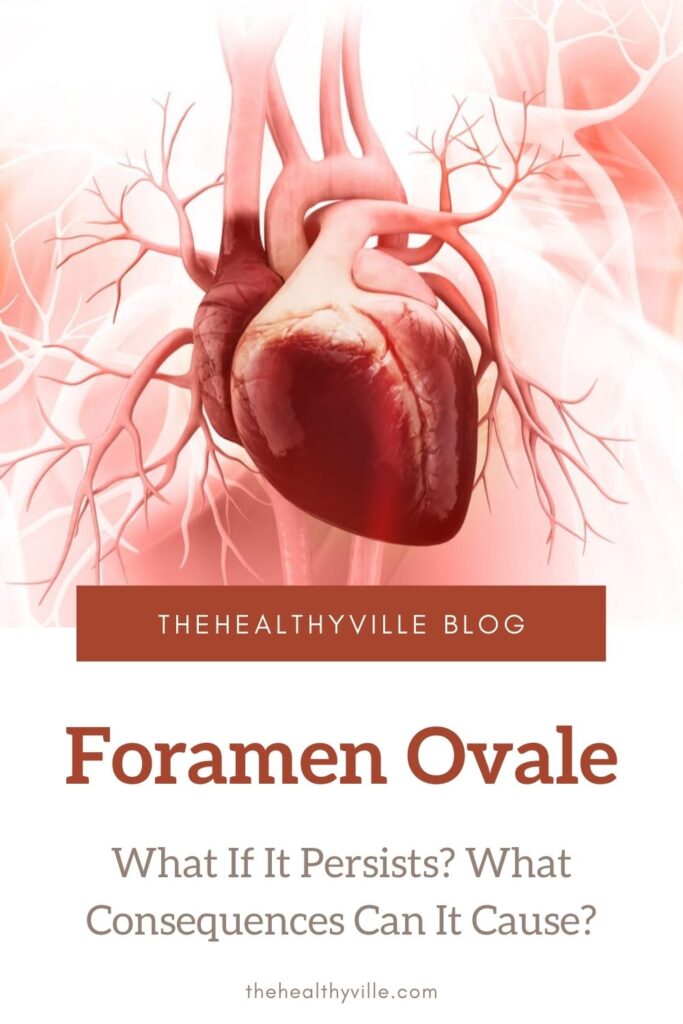Foramen ovale is a small tunnel that connects the right atrium with the left. This structure should close at birth, but what if it doesn’t?
The term patent foramen ovale (POP) refers to a hole in the heart that did not close as it should after birth. It is a remnant of the fetal circulation that is present in many healthy people, but unfortunately it has been associated with several clinical conditions throughout adulthood. This biological phenomenon appears in 25% of the population.
Without going any further, studies that we will cite in later lines estimate that, of the 800,000 cerebrovascular accidents (CVAs) that occur each year in the United States, some 70,000 could be associated with persistent oval foramina. If you want to know more about this interesting and unknown condition, keep reading.
What is a persistent oval hole?
To understand this situation, we must first fix our attention on the foramen ovale. It is the opening in the intraatrial septum of the heart’s wall. Its function is to allow the passage of blood from the right atrium to the left. It facilitates fetal systemic circulation.
The foramen ovale forms around the fourth gestational week, as a small passage connecting the septum secundum and the ostium secundum. It should be noted that a baby does not receive blood from her lungs (since they are not developed) while growing in the mother’s womb, but from the oxygen-rich blood that comes from the placenta.
Therefore, the foramen ovale allows the growth to continue without the need for blood to pass through a pulmonary circuit (from right to left). As indicated in the Journal of Cardiovascular Echography, this hole begins to close at birth, disappearing completely in 75% of the population by 2 years of age.
In the remaining 25% of the population, the foramen ovale does not close and remains for life. The vast majority of persistent foramina ovale (POP) are asymptomatic. But as we will see, they have been associated with certain circulatory complications.
Symptoms associated with a persistent foramen ovale (AOP)
As the Mayo Clinic points out, most people never know they have a foramen ovale and, therefore, epidemiological data comes from autopsies. This abnormality can also be detected in a routine echocardiogram or that is performed looking for another pathology.
Anyways, the AOP’s anatomy can be different in each case, with a tunnel of different width and length: from 5 to 13 millimeters and from 1 to 6 millimeters, respectively.
In babies with a foramen ovale that has not yet closed, a bluish color may appear on the skin on exertion. This event is known as cyanosis. This occurs due to poor oxygenation of the blood in which the foramen ovale intervenes. But it is usually indicative of cardiac pathologies that go beyond the AOP.
Possible causes and risk factors
The causes of persistent foramen ovale are unknown. Scientists suspect family genetics to be the main cause. However, we know that normal closure occurs due to pressure changes in the lungs. That’s why the pulmonary vascular pressure decreases and the right atrial pressure exceeds the left. This causes the septum primum and the septum secundum to contact. This eventually results in a closure of the foramen ovale. A small depression stays in the wall between the two septa: the fossa ovalis, as a result of this closure.
Some sources argue that a closed foramen ovale can be temporarily opened by an increase in blood pressure. This clinical event is called pro-AOP, but there are not many citations to support its existence.
For this reason, all patients with POPs and other circulatory disorders need to be active. They need to exercise regularly, and watch their weight. Reducing the chances of thrombosis also prevents a stroke or myocardial infarction associated with foramen ovale.
Take care of yourself
Most oval holes which persist do not cause any problems. It is true that doctors associate its presence with a greater risk of embolism. But, this correlation still requires more studies and knowledge on the part of professionals.
Fortunately, the risks of this and many other circulatory diseases can be minimized with a healthy lifestyle. Therefore, a healthy diet and an active routine will prevent complications arising from a persistent foramen ovale.
Don’t forget to SHARE everything you know about the persistent foramen ovale with your friends and family on your social networks!

